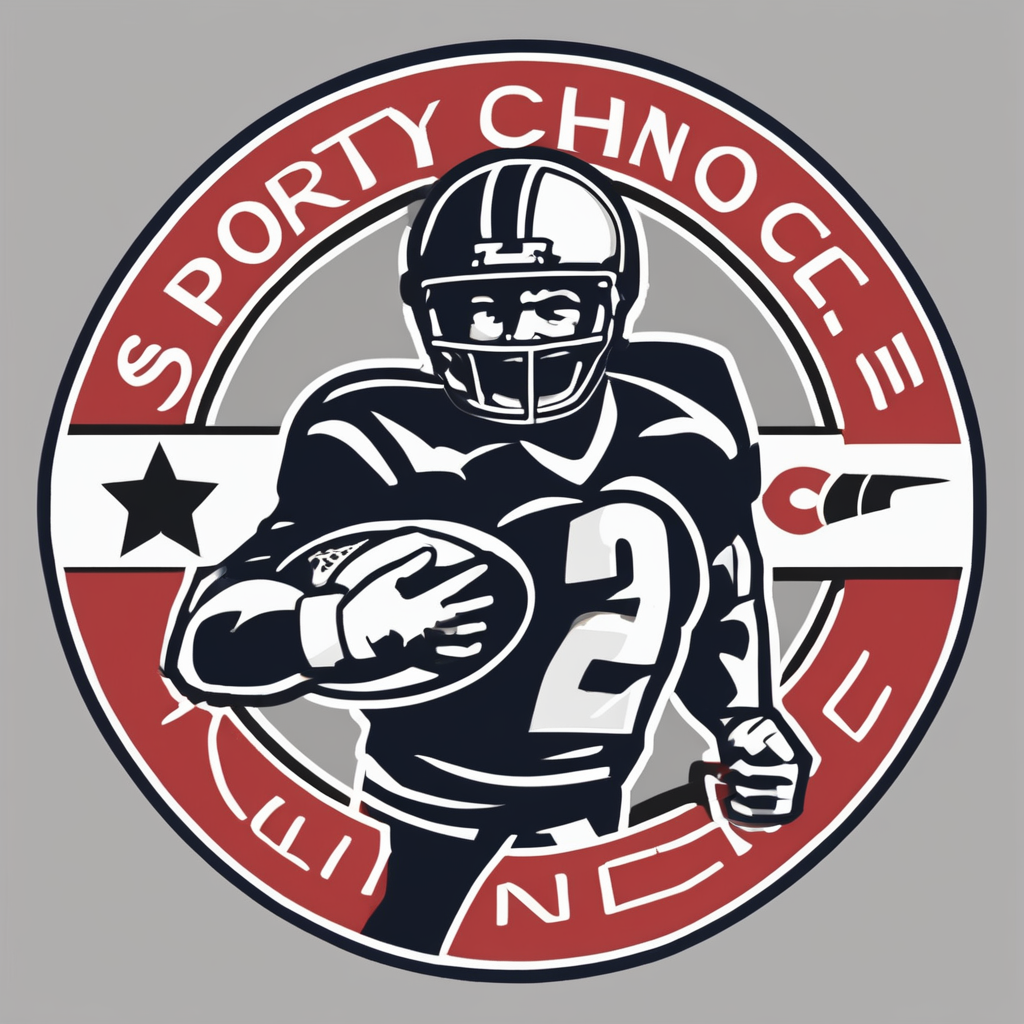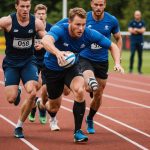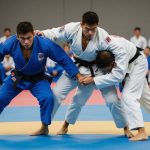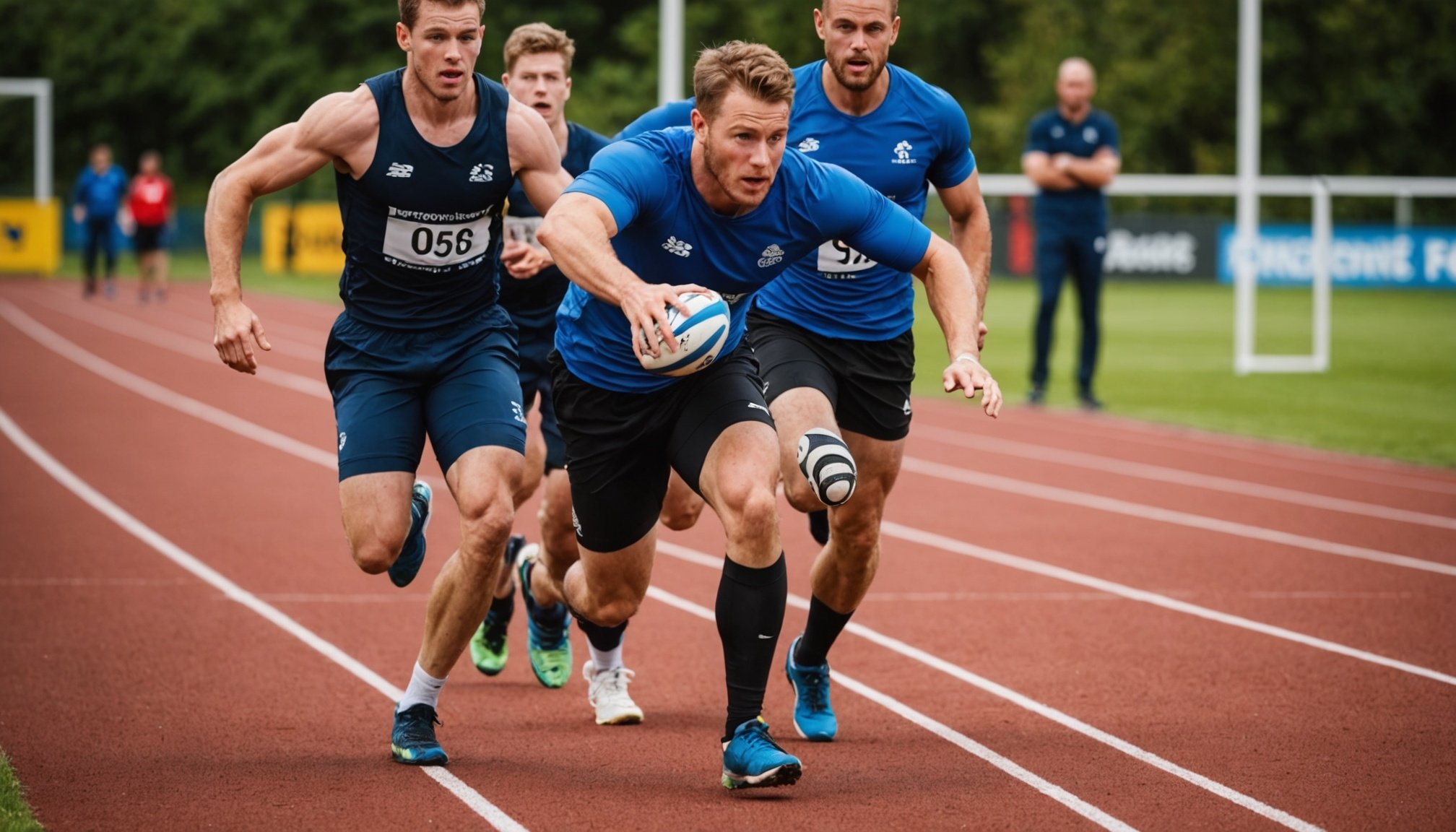Key Elements of an Effective Recovery Plan for Injured Athletes in the UK
When it comes to sports, injuries are an unfortunate but common occurrence. For athletes in the UK, having a well-structured recovery plan is crucial for a swift and successful return to their sport. Here, we will delve into the key elements that make up an effective recovery plan, ensuring that injured athletes can regain their strength, functionality, and overall health.
Understanding the Importance of Recovery
Recovery is often referred to as the “invisible training” that complements the physical workouts and training sessions. It is during the recovery phase that the body repairs and strengthens itself, making it a critical component of any athlete’s training plan.
Also read : Top Strength Training Moves Every UK Football Goalkeeper Should Master
The Effects of Training on the Body
During intense exercise, the body undergoes significant stress, leading to tiny tears in muscle fibers, strain on the cardiovascular and nervous systems, and the buildup of lactic acid. Recovery helps to repair these damages, reduce fatigue, prevent injuries, and optimize performance. It also supports hormonal balance, improves flexibility and mobility, and provides psychological benefits by reducing stress and promoting better sleep.
Setting Realistic and Achievable Goals
Goal setting is a fundamental aspect of any recovery plan. It helps athletes stay motivated and focused on their progress. Here are some steps to set effective goals:
Also to discover : Unlocking Potential: The Transformative Impact of Mindfulness Techniques on Competitive Swimmers in the UK
SMART Goals
- Specific: Clearly define what you want to achieve. For example, “I want to be able to run a 5K without pain.”
- Measurable: Quantify your goal so you can track progress. “I will increase my running distance by 1K each week.”
- Achievable: Ensure the goal is realistic based on your current condition. “I will start with short walks and gradually increase the distance.”
- Relevant: Align the goal with your overall objectives. “Returning to competitive running is my main goal.”
- Time-bound: Set a specific timeframe for achieving the goal. “I aim to run a 5K in 12 weeks.”
For instance, if an athlete wants to drive a 1-hour journey after an injury, they might start by sitting in the car for 30 minutes and gradually increase the duration over a few weeks.
Physical Activity and Exercise in Recovery
Physical activity plays a vital role in the recovery process. Here’s how it can be integrated effectively:
Strength Training
Strength training is not just about building muscle; it is a powerful tool for reducing the risk of injury and enhancing recovery. It improves muscle strength and endurance, supports bone health, enhances balance and coordination, and corrects muscle imbalances. This form of training can also prevent overuse injuries by distributing the load more evenly across muscle groups.
| Benefit | Description |
|---|---|
| Improved Muscle Strength and Endurance | Strong muscles provide better support to joints and bones, reducing the strain during physical activities. |
| Better Bone Health | Strength training stimulates bones to become denser and stronger, reducing the risk of fractures and osteoporosis. |
| Enhanced Balance and Coordination | Improved balance reduces the likelihood of falls and related injuries. |
| Correcting Muscle Imbalances | Strength training helps in identifying and correcting muscle imbalances that can lead to injuries. |
| Prevention of Overuse Injuries | Distributes the load more evenly across muscle groups, reducing the risk of overuse injuries. |
Functional Rehabilitation
Functional rehabilitation involves exercises that mimic the movements and actions of the athlete’s specific sport. This approach helps in regaining functional strength and mobility, ensuring a smoother transition back to competitive sports.
For example, a football player recovering from an ACL injury might start with physiotherapy and rehabilitation exercises that focus on knee stability and strength. As they progress, they would incorporate functional exercises such as agility drills and ball control activities to prepare for the demands of the game.
Nutrition and Hydration
Proper nutrition and hydration are essential for recovery. Here are some key points to consider:
Macronutrients
- Protein: Crucial for muscle repair and growth. Aim for 1.2-1.6 grams of protein per kilogram of body weight daily.
- Carbohydrates: Important for replenishing energy stores. Focus on complex carbohydrates like whole grains, fruits, and vegetables.
- Healthy Fats: Necessary for cellular function and overall health. Include sources like nuts, seeds, and avocados in your diet.
Hydration
- Adequate hydration helps in flushing out toxins and maintaining muscle flexibility. Aim to drink at least 8-10 glasses of water per day.
As emphasized by sports nutrition experts, “Proper nutrition is crucial for recovery. Ensure you consume enough protein to support muscle repair, carbohydrates to replenish energy stores, and healthy fats for cellular function. Hydration also plays a key role in recovery, helping to flush out toxins and maintain muscle flexibility”.
Rest and Sleep
Rest and sleep are pivotal for muscle recovery and overall health.
Active Rest Days
- Incorporate low-intensity activities like walking, yoga, or light swimming to stimulate blood circulation without adding extra stress.
Prioritizing Sleep
- Aim for 7 to 9 hours of sleep each night. During sleep, the body repairs muscle fibers and releases growth hormones that aid regeneration.
Injury Management and Prevention
Effective injury management and prevention strategies are crucial for athletes.
Common Injuries and Their Management
- Sprained Ankle: Follow the POLICE procedure (Protect, Optimal Loading, Ice, Compression, Elevation) and avoid HARM (Heat, Alcohol, Running, Massage) in the first three days.
- ACL Injury: Manage with physiotherapy and rehabilitation. Follow POLICE and HARM steps, and seek advice from a physiotherapist if symptoms persist.
Preventing Injuries
- Strengthen Lower Limbs: Engage in exercises like calf raises, squats, lunges, and deadlifts to prepare major muscle groups for the demands of the sport.
- Warm Up and Cool Down: Proper warm-up and cool-down routines can significantly reduce the risk of injury. Include dynamic stretching and low-intensity cardiovascular exercises.
- Wear the Right Gear: Protect your body by wearing appropriate clothing and gear, such as good boots and shin guards.
Psychological Support and Pain Management
Recovery is not just physical but also psychological.
Responding to Setbacks
- When symptoms flare up, it’s important to stay calm and not panic. Assess the pain, try to relax, and modify your activity levels temporarily. Gradually increase activity once the symptoms subside.
Mental Health
- Rest provides mental benefits by reducing stress from intense training, promoting relaxation, and improving sleep quality. Recognizing and managing psychological stress is crucial for a holistic recovery.
Working with Professionals
Seeking professional help is essential for an effective recovery plan.
Physiotherapy
- A physiotherapist can assess the extent of the injury and provide a tailored rehabilitation plan. They can also offer exercises to strengthen muscles and prevent future injuries.
Customized Recovery Plans
- Work with a physiotherapist to create a recovery plan that progresses in small, consistent steps. This ensures realistic and achievable goals are set and maintained.
Practical Insights and Actionable Advice
Here are some practical tips for athletes to incorporate into their recovery plans:
- Listen to Your Body: Recognize signs of fatigue, overtraining, or pain. Adjust your training program accordingly to avoid exacerbating the injury.
- Use Recovery Tools: Utilize tools like electrical muscle stimulation, compression boots, massage, foam rolling, ice baths, or contrast therapy to enhance recovery.
- Schedule Recovery Weeks: After several weeks of intensive training, schedule a recovery or “reload” week to allow your body to fully rest and recover.
Recovery is a multifaceted process that requires careful planning, execution, and patience. By integrating strength training, proper nutrition, adequate rest and sleep, effective injury management, and psychological support, athletes can ensure a comprehensive and successful recovery.
As Dr. John Currier, a sports medicine expert, notes, “Strength training isn’t just about getting stronger or building a more sculpted physique; it’s a powerful tool for reducing the risk of injury and enhancing recovery”.
By following these key elements and seeking professional guidance when needed, athletes in the UK can minimize their risk of injury, optimize their recovery, and return to their sports with improved strength, functionality, and overall health.











